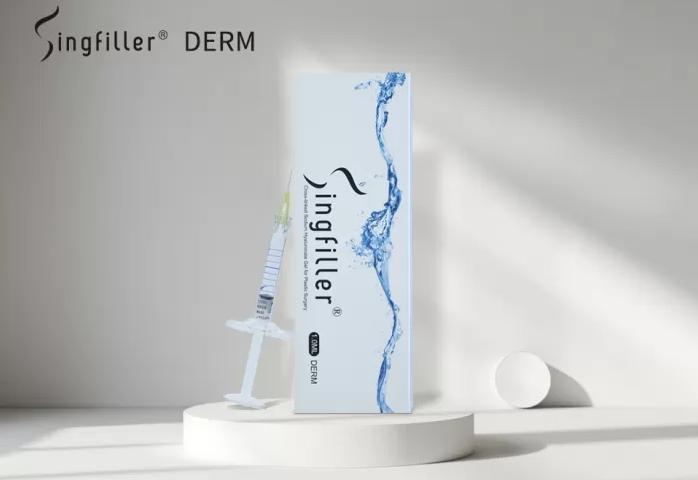Monophasic and biphasic are two classifications used to describe different formulations of dermal fillers. These terms refer to the composition and structure of the fillers and play a significant role in determining their characteristics, longevity, and applications in cosmetic procedures. Understanding the distinctions between monophasic and biphasic dermal fillers helps in selecting the most suitable product for specific aesthetic needs and desired outcomes.
- Monophasic dermal fillers are composed of a single, uniform phase of hyaluronic acid (HA). The HA molecules are evenly distributed throughout the filler substance.
- Homogeneous Structure: Monophasic fillers have a consistent composition and structure, providing a smooth and uniform gel consistency.
- Smooth Texture: They offer a smooth texture and are often preferred for filling fine lines, superficial wrinkles, and delicate areas.
- Controlled Flow: Monophasic fillers have controlled and predictable flow properties, making them suitable for precise injection into fine lines and areas requiring delicate enhancement.
- Natural Look and Feel: Due to their uniform consistency, monophasic fillers can provide a natural look and feel when injected properly.
- Monophasic fillers are commonly used for addressing superficial lines, perioral lines (around the mouth), crow's feet, and enhancing lip contours.

- Biphasic dermal fillers consist of two phases: a gel phase containing hyaluronic acid and a particulate phase of HA microspheres suspended within the gel.
- Dual Phases: The gel phase provides immediate volume, while the microsphere phase offers longer-term support and structural integrity.
- Immediate and Long-Term Effects: Biphasic fillers provide an immediate volumizing effect due to the gel phase and a longer-lasting structural support through the microspheres.
- Enhanced Lift and Volume: The presence of microspheres allows for increased lift and volume, making biphasic fillers suitable for deeper lines and areas requiring more substantial augmentation.
- Biphasic fillers are often used for deeper wrinkles, nasolabial folds, marionette lines, cheek augmentation, and facial contouring where increased volume and structural support are required.
- Monophasic fillers with their homogeneous texture are more suitable for superficial injections, whereas biphasic fillers, with their dual-phase composition, are designed for deeper injections to provide volume and support.
- Biphasic fillers typically offer longer-lasting effects due to the presence of microspheres, providing structural support that can extend the duration of aesthetic improvements compared to monophasic fillers.
- Injectors should have experience and expertise in understanding the different characteristics and injection techniques required for monophasic and biphasic fillers to achieve optimal results.
- Understanding patient expectations and desired outcomes is crucial in selecting the appropriate filler type. Monophasic fillers may be preferable for subtle enhancements, while biphasic fillers might be more suitable for individuals seeking more significant volume and lift.
Monophasic and biphasic dermal fillers represent two distinct formulations with varying compositions and characteristics. Monophasic fillers, featuring a single-phase gel consistency, are suitable for superficial lines, delicate areas, and providing a natural look. In contrast, biphasic fillers, containing dual phases with microspheres, offer immediate volume and long-term structural support, making them ideal for deeper lines, volumizing larger areas, and providing enhanced lift.
Choosing between monophasic and biphasic fillers depends on individual aesthetic goals, the depth of correction needed, and the injector's expertise in achieving desired outcomes. Understanding the differences and considering factors like injection depth, longevity, and desired enhancements helps in selecting the most appropriate dermal filler type to meet specific cosmetic needs and achieve optimal results in aesthetic procedures. Consulting with a qualified healthcare professional is crucial for personalized advice and selecting the most suitable dermal filler formulation based on individual preferences and treatment goals.
 Call us on:
Call us on:  Email Us:
Email Us:  No. 125(E), 10th Street, Hangzhou Qiantang Area, Zhejiang, China
No. 125(E), 10th Street, Hangzhou Qiantang Area, Zhejiang, China